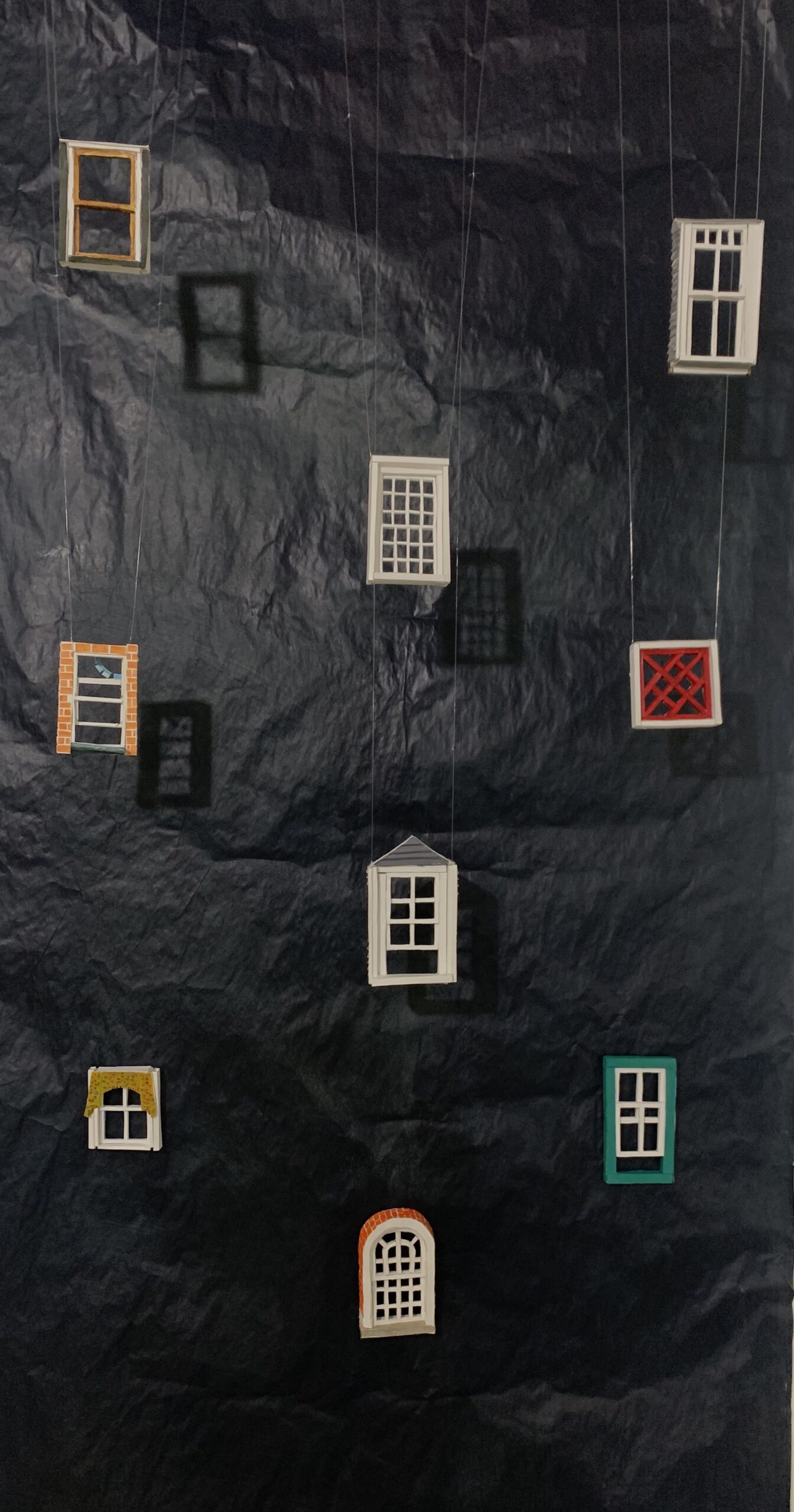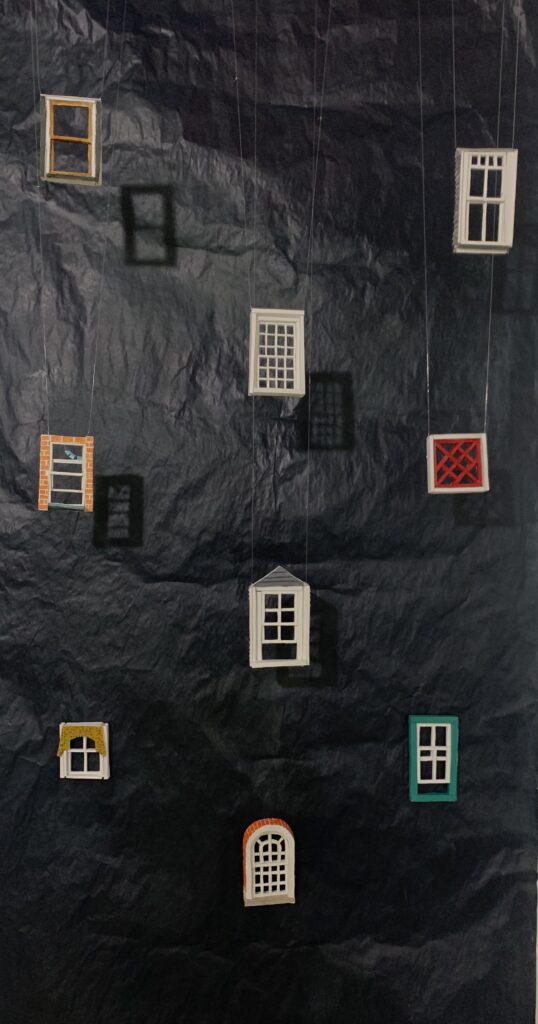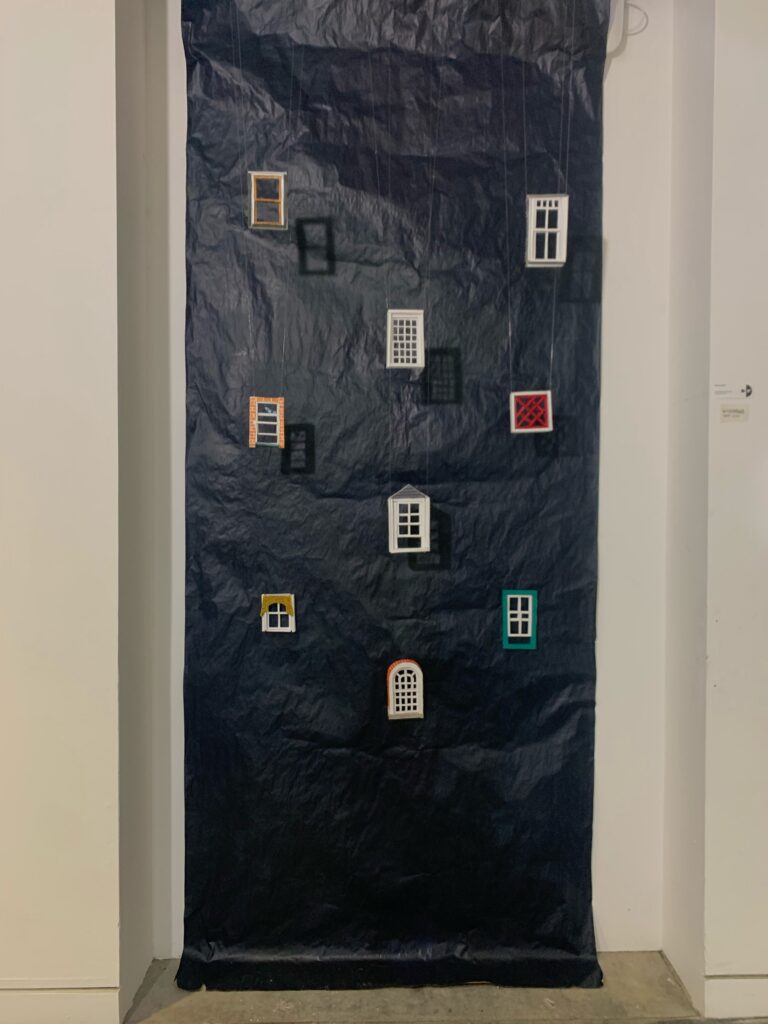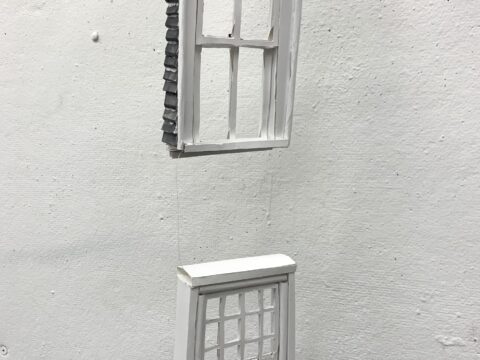“Windows” began as a documentation of the various windows that have appeared in my life, memory, and over Facetime across this semester, but it also became a diary of labor and a sustained project of noticing. I worked on this project throughout almost the entire semester and was able to create nine windows in all. Each sculpture is made of hot glue, paper, and paint. Creating each window was a practice in attention. I used an x-acto knife to cut tiny shapes and score where I wanted the windows to fold. I used only paper to form trim, shingles, siding, and individual panes. I kept the scale small because I wanted for myself and the viewer to look at each one closely. Although they eventually came together in one piece, I wanted them to also have the ability to stand as art objects individually.
Because this was such a sustained diary form, “Windows” became the theme that framed my thoughts over these past few months. Outside of the studio, I paid close attention to the windows I encountered, both looking for their visual interest, and their symbolic meaning. Some windows I chose because of their shape, or the level of detail I could recreate in paper. Others I chose because of their significance. I modeled, for example, my current dorm room window, my bedroom window at home, and a window from my boarding school dorm. What I was left with after installing all the windows together was like a fractured face of a building which houses the many spaces that make up the world I move through.
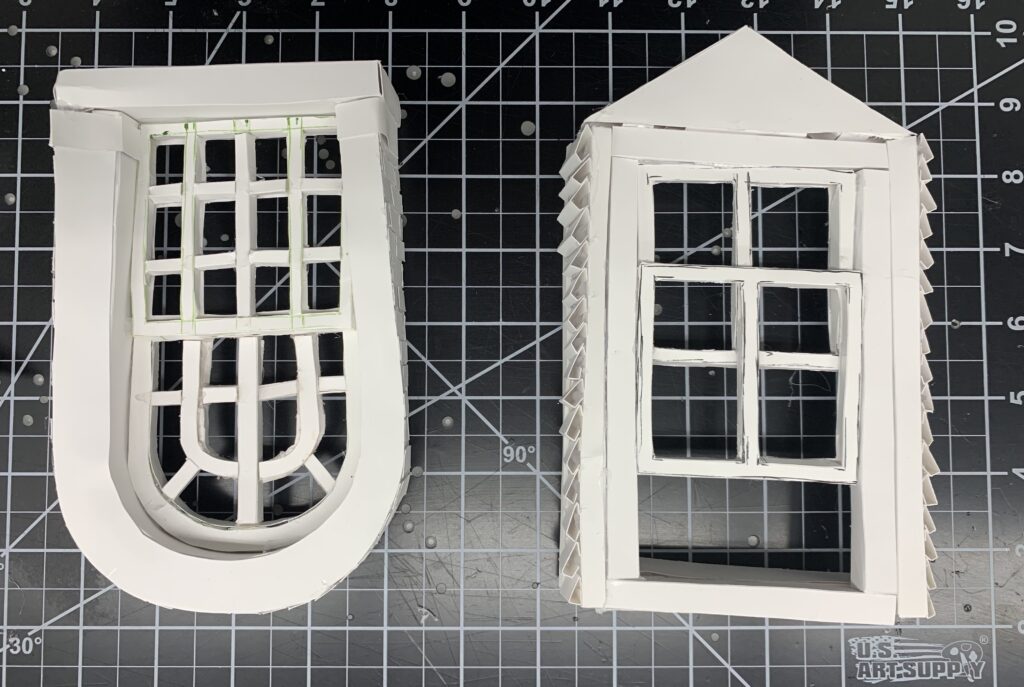
The subject of windows generated the interest I had in this project which allowed me to sustain it for so long. I took a lot of pleasure in observing something that is more often looked through than at. My camera roll is now populated with pictures of windows. Finding a particularly interesting window, such as the curved one (above on the left) or one with slanted panes, posed a challenge that I was eager to tackle. The medium of paper worked well to form the geometric shapes present in the windows, and it was malleable enough to be made to bend into shape easily. I generally focused on one window every week, and each one came to “frame” the stretch of time I spent working on it. They literally became the windows through which I viewed the goings on of my life throughout the duration of their creation.
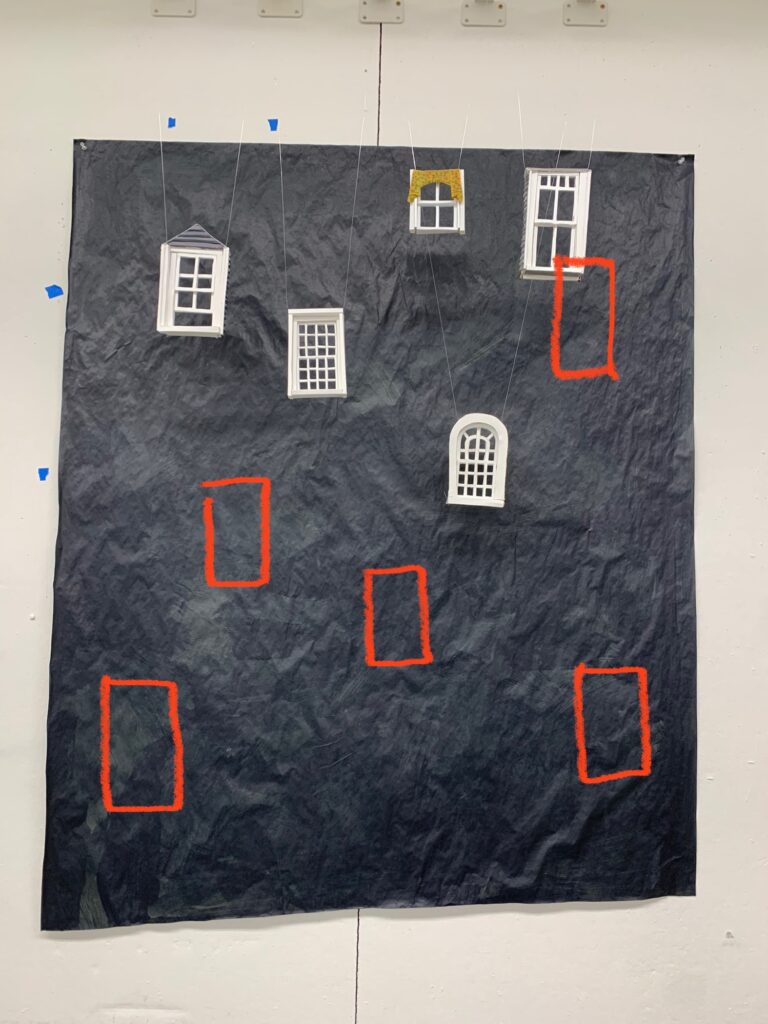
The process of installing this project was one of trial and error. The windows originally hung from white brackets over a dark square of paper. The brackets were too distracting to the eye, and the square paper contained the piece in a dissatisfying way.
When I moved the installation to the hallway, I chose to tape up the string instead, to draw the eye away from that area. I painted one long piece of paper that fit into the alcove to elongate the entire piece so that the windows could exist within enough space. When it came to lighting, it was important to achieve the window shaped shadows to create visual interest with the layers, and an interplay of light and shadow.
The final solution was to shine a strong clip light from across the hall, and the shadows showed up on the black background.
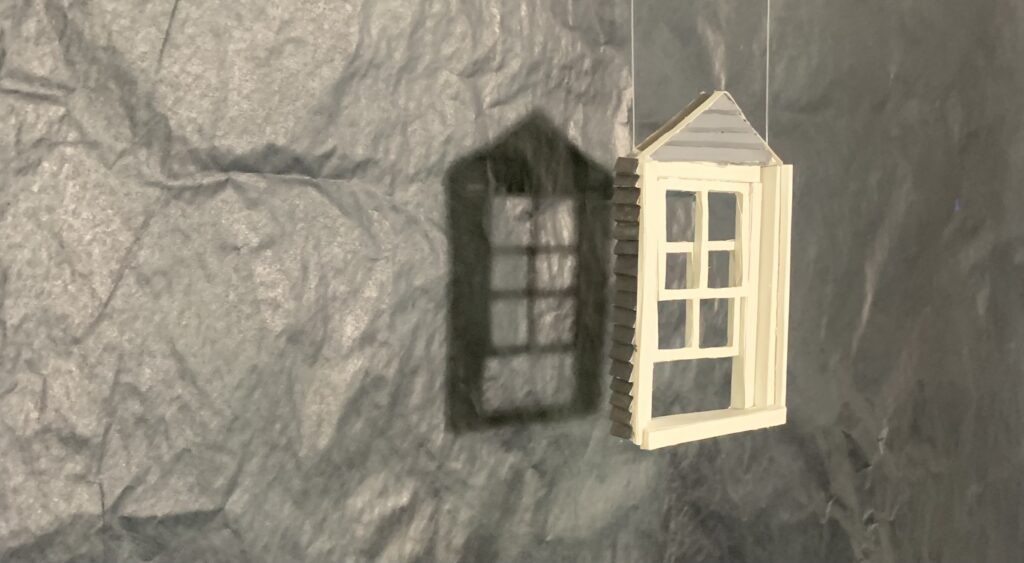
Finally, I chose to hang the windows closest to the wall at the bottom, gradually coming out from the wall as they neared the top. This was to give more depth to the project as a whole, so the 3Dness of the sculptures wouldn’t be lost in viewing the piece against the wall.
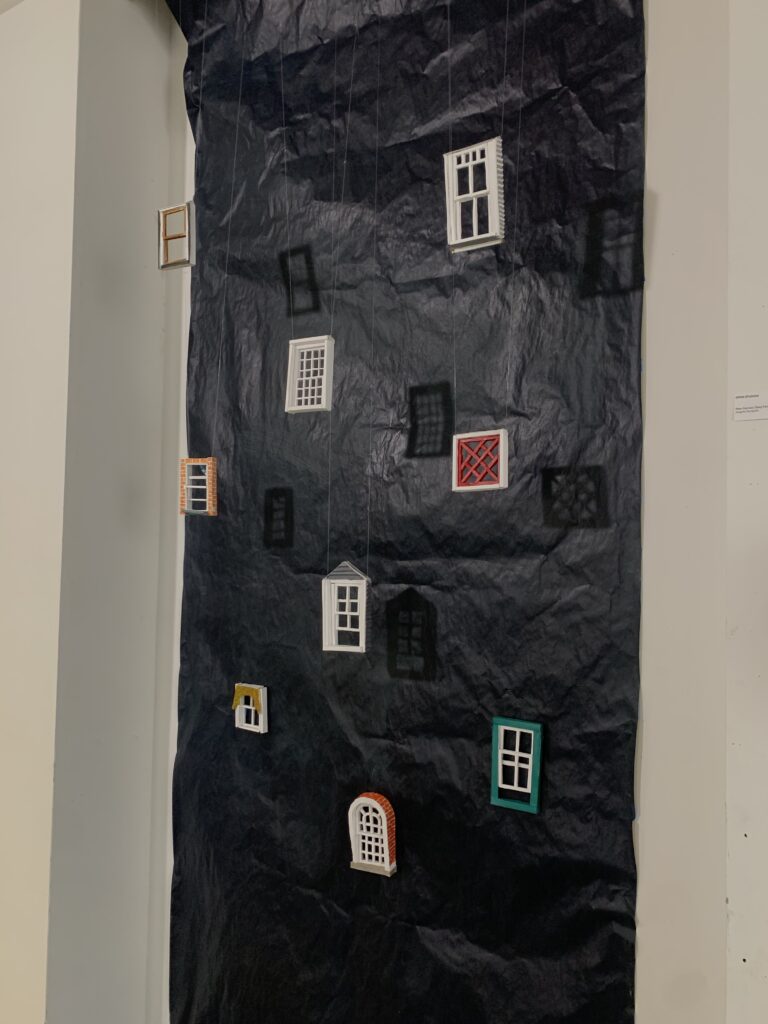
To me, this piece is a collection. I have always been someone who enjoys miniatures and tchotchkes, and these windows are very reminiscent of that. It is satisfying to view all the windows together because it also brings together the many spaces I have inhabited throughout my life this semester and beyond. I see an opening to continue this project. There are so many more windows I could create, and so many ways I could install them. In that way, I feel that this piece could become a sustained diary for years to come.
